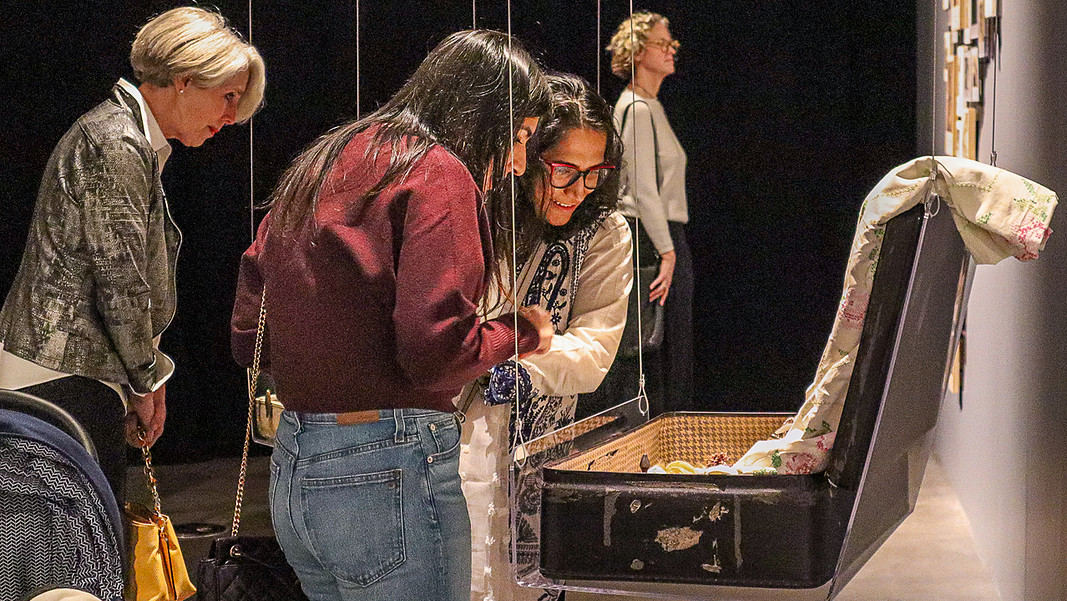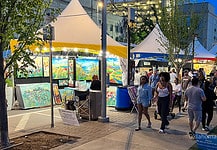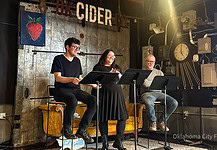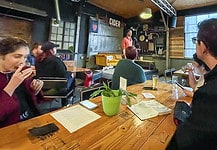OKLAHOMA CITY — At first thought, it may seem strange that a massive, immersive, international arts installation and experience like HOME1947 – based around the Partition of India that created the nations of India and Pakistan – would see its North American debut in OKC.
That is until you realize that the exhibit holds a particular resonance in any place with its own history of migration, displacement, and generational, cultural tragedy.
Developed and curated by Canadian-Pakistani artist/filmmaker/documentarian/activist Sharmeen Obaid Chinoy, HOME1947 tells the story of Partition through the combined immersion of hyper-modern technology, arts media, and the first-hand accounts and memories of those who experienced the horrors of 1947.
“HOME1947 is an ode to my grandparents’ generation, whose stories I grew up listening to,” Obaid Chinoy said in a press statement. “As [visitors] walk through the installation, [they can] imagine the journeys people made, the conversations that were interrupted, the broken friendships and promises, the playgrounds children left behind, the empty corridors of their homes, and those suitcases of memories locked away forever.”
Stories of Partition
For those unfamiliar, the Partition of India is the name given to the establishment of borders that created the separated nation-states of India and Pakistan in the immediate wake of Britain’s withdrawal from the subcontinent after 300 years of brutal imperialism.
The newly created Pakistan (broken into East and West on either side of India’s domain) was established for Muslim control. India was established for non-Muslim rule, primarily Hindu and Sikh

The political, geographical, and cultural ramifications were incalculable, but for the hundreds of millions of citizens living in the region, the most pressing concerns were simply for safety, and for most, that meant seeking refuge within religious borders.
So began a time of mass migration never before or since experienced in human history, with between 10 and 20 million displaced and migrating for refuge, with many fleeing for their lives as violence and atrocities erupted across the region.
Most left behind homes, friends, families, futures, and entire lives.
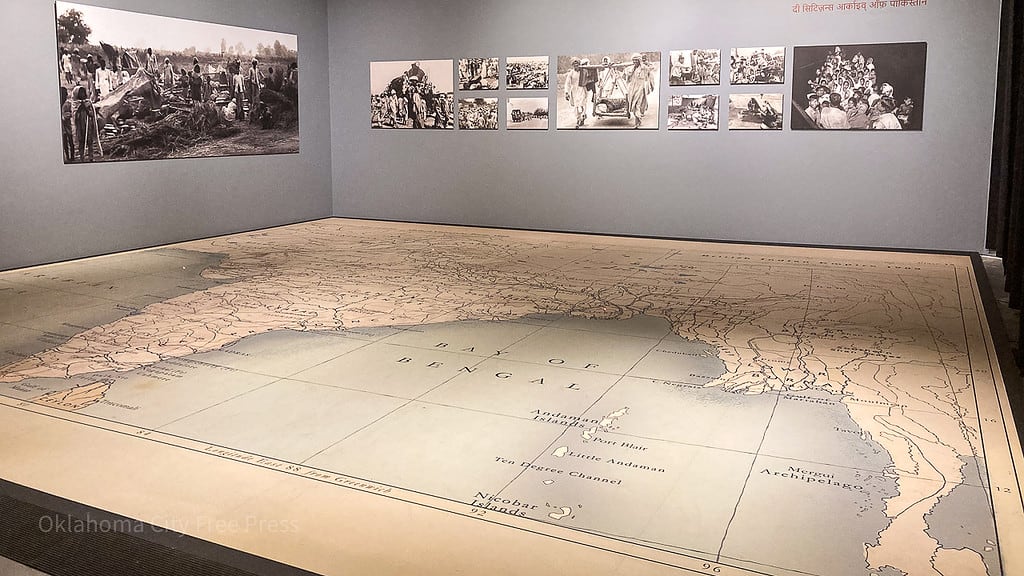
HOME1947 aims to not only tell their stories but also to help the memories of Partition add historical context to the continuing displacements and crises of the modern world.
Memories of Home
The central question of HOME1947 is whether home is a place or simply an idea, and if it’s ever actually possible to return to either of those versions of home once you’ve left them behind.
The immersive experience of the exhibit is bookended by two collections of short films in installations titled “In the Words of Survivors,” presenting a combination of dramatic, harrowing recreations and documentary testimonies from the now-elderly survivors of the chaos of 1947.
In between these two darkened, cinematic spaces lies a massive, diversely transportive collection of experiences, each focused on its own psychological stamp of displacement and sudden flight.
There are suspended, opened suitcases of the era, each floating before you and hanging open with family photos, hastily packed clothing, and physical memories spilling out, often the only remains of a previous life that could be carried to a new home across new borders.
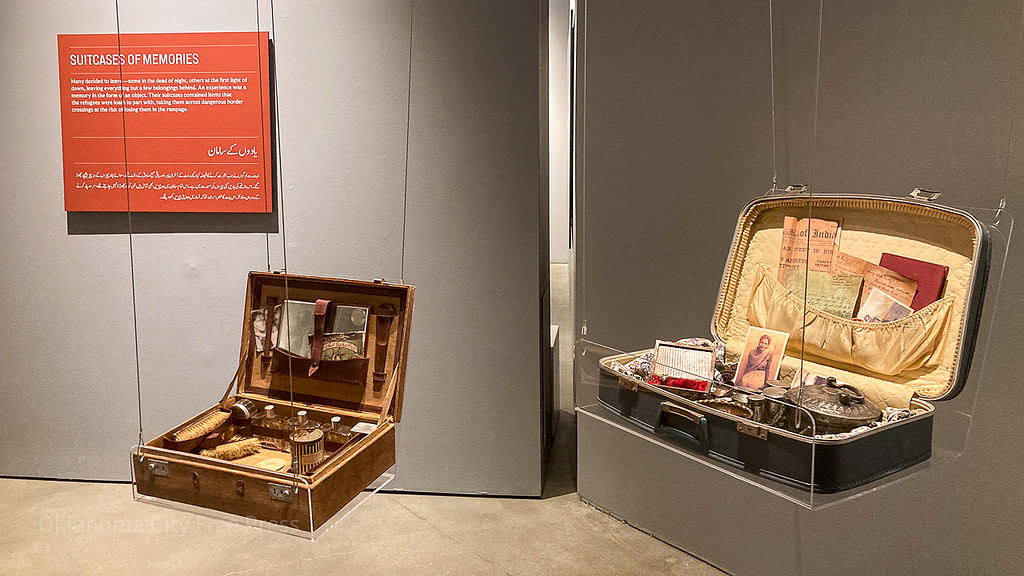
There’s a huge map laid out on the floor, inviting you to walk upon it and survey the breadth of the subcontinent at the time. Red laser pinpoints dot the map, and walking over them triggers precisely directed sound clips of survivors recounting their experiences and memories, mostly recalling the things they left behind.
A dark hall-like passage fills with the sounds and voices of fleeing and migration, every step activating a new light to illuminate the path forward, with life-sized photographs of the time revealing themselves before you.
And in the midst of all this, there’s a welcomed, unexpected VR experience.
Staff assists you in activating and fitting the headset, and then, suddenly, you’re standing quietly, steadily, and safely in the rooms and stairwells of Old India. The windows are open. The comforting sounds of life outside are filling your ears, and you are experiencing exactly what was lost by so many millions displaced.
It’s staggeringly simple, but among so much sadness and chaos, it’s easy to call it the finest use of VR in an arts installation that I’ve yet seen.
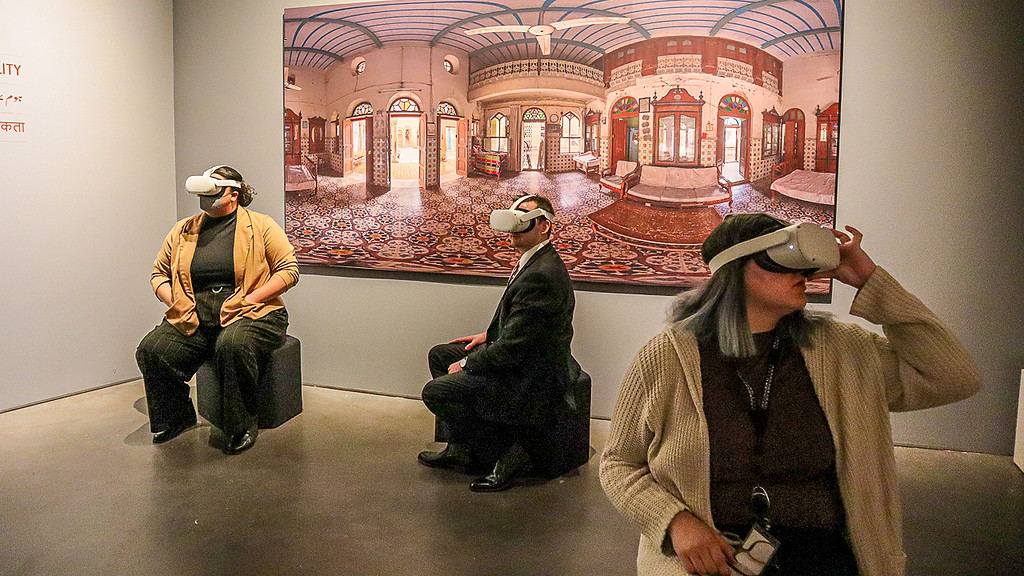
Through each new room and numerous artistic additions, the central theme of “home,” in all its forms, is never forgotten.
“Home is where you find happiness,” says a survivor in the short film “Midnight Fury” as he remembers witnessing the murder of his mother and fleeing the upheaval of 1947. “And where there is no happiness, no matter what you have, it is not a home.”
‘Steeped in Stories’
It’s not lost on the exhibit’s organizers that the themes of displacement, both geographical and cultural, carry an especially heavy weight in Oklahoma. It’s one of the biggest reasons that funders like Oklahoma Humanities brought the exhibition to OKC for its first North American showing.
“While HOME1947 clearly has historical specificity that would resonate with the diasporic South Asian community in the region, the feelings that it evokes also strike a universal chord,” said Contemporary’s Senior Director of Curatorial Affairs Carina Evangelista in a statement.
Oklahoma is “a place steeped in stories of displacement that dovetail with what it takes to create a new home,” she said, “from Oklahoma being a final destination of the Trail of Tears to Oklahoma City opening itself to refugees during and after the Vietnam War, and its present efforts toward the settlement of new Afghan neighbors.”
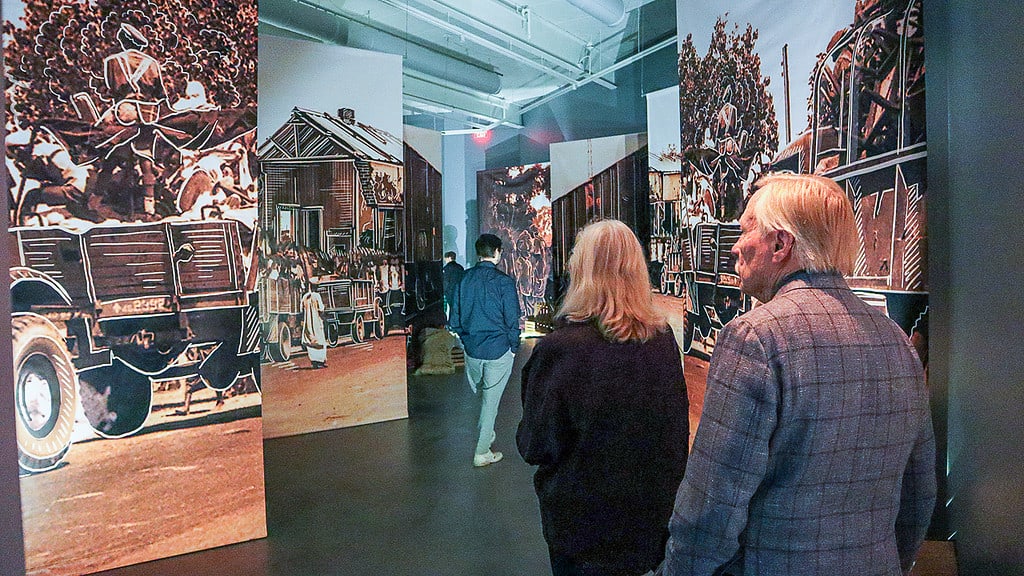
This exhibit is a remarkably apt companion to Contemporary’s “Descendants of the Black 1000” still showing on the museum’s third floor, exploring the mass migration of Black Oklahomans to Canada after the passing of Jim Crow segregation in the days immediately following statehood in 1907.
Together, these installations and their themes provide a tragically timely perspective on our present-day world, as we continue to see displacements and massive-scale horrors playing out across the globe.
It’s in that understanding that Obaid Chinoy asks audiences of HOME1947 to “measure the accumulating weight of the past in considering the conflicts in the present moment.”
HOME1947: Sharmeen Obaid Chinoy is open and running at Oklahoma Contemporary Arts Center now through July 22nd. Admission is always free.
A special installment of Contemporary’s Community Conversations event series entitled “Across the Table” will be held Thursday, March 28th inviting guests to discuss and engage with HOME1947 in “an evening of dialogue, short performances and South Asian cuisine in the spirit of bridging communities and generations.”
Tickets for that event, museum hours, and more information can be found online at oklahomacontemporary.org.
Brett Fieldcamp has been covering arts, entertainment, news, housing, and culture in Oklahoma for nearly 15 years, writing for several local and state publications. He’s also a musician and songwriter and holds a certification as Specialist of Spirits from The Society of Wine Educators.
